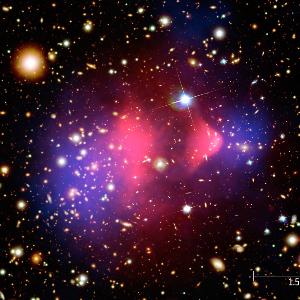
We are located at the University Observatory Munich (USM). We work on the interface between theoretical and observational cosmology. Our main research interest is in confronting modern cosmological theories with observations. Here we have in particular a strong research program in exploiting galaxy clusters and cosmic voids, but also in more general probes of the large-scale structure and the cosmic microwave background. One of our main motivations is to understand the nature of the cosmic acceleration in the Universe. Here we try to constrain theoretical models from standard dark energy, coupled scalar fields to theories which extend Einstein's gravity at large distances. In order to achieve this goal, we use analytical and numerical methods, such as N-body simulations of the structure formation process, state of the art statistical analysis tools and modern Bayesian techniques. Furthermore, we have a strong research program in machine learning applications in astrophysics, but also apply these methods in medical physics and string theory.
We are involved in the following national and international collaborations: The Dark Energy Survey DES, The Euclid satellite mission of ESA, the Dark Energy Science Collaboration DESC at the Rubin Observatory Legacy Survey of Space and Time, the Hobby-Eberly Telescope Dark Energy Experiment HETDEX, the eRosita X-ray satellite mission, the Square Kilometer Array SKA and the LiteBird satellite mission.
We work together with other groups at the Max Planck institutes. Among others: OPINAS and High Energy Astrophysics groups at MPE, the Cosmology research group at MPA, as well as with members of other groups at the Excellence Cluster and groups at MPP.
